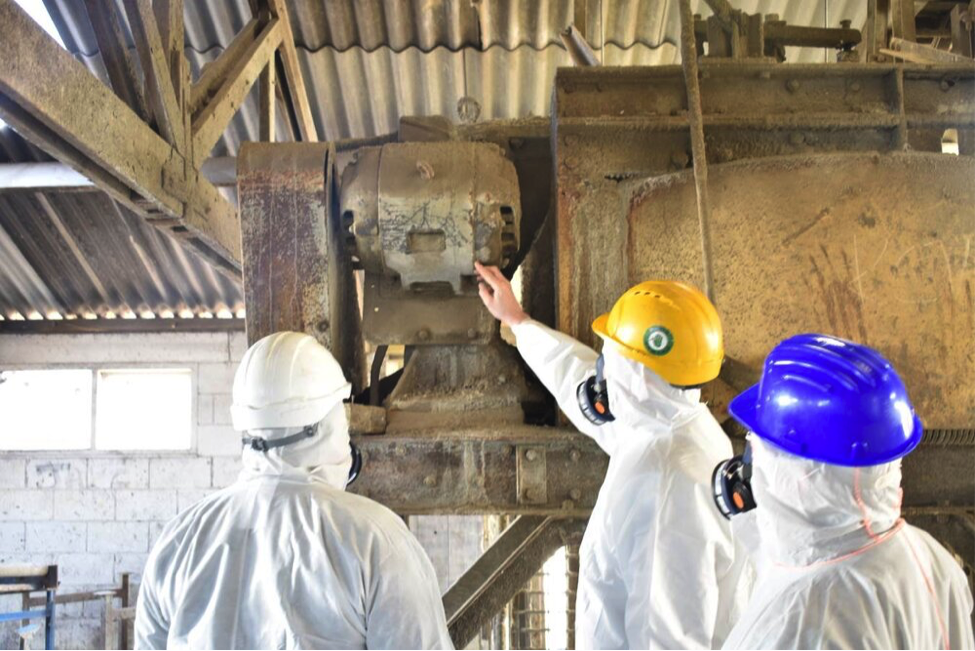How to Choose a Quality Asbestos Remover

Do you have asbestos in your home? Here is how you can remove it!
Does your home have asbestos in its building structure? Asbestos can be found in the following parts of a house:
- Flue pipes
- Drainage
- Cement sheeting
- Roofing
- Guttering
- Building boards that are flexible
- Siding
- Shingles
- Floor tile
The only way you can be certain whether the structures in your home contain asbestos is to have them tested by a qualified lab. The EPA recommends testing of housing structures only when they are damaged (crumbling or fraying) or if you intend to renovate certain parts of your house thereby disturbing the asbestos materials. To find out how to choose a quality asbestos remover, read more of this blog.
Health Effects of Asbestos
The fibers of asbestos are only harmful if they are inhaled by human beings after being released into the air. When the asbestos fibers are released into the air, they break down into smaller particles. The airborne particles are then inhaled by the inhabitants of the house. The particles of asbestos collect in the lungs, causing inflaming and scarring the walls of the lungs. Asbestos has been classified as a carcinogen by several U.S health organizations like The American Cancer Society and the Environmental Protection Agency. Exposure to asbestos for a long period of time increases the risk of developing the following conditions:
- Lung cancer
- Asbestosis- permanent lung damage caused by asbestos
- Mesothelioma- a type of cancer that develops along the lining of the stomach and the chest
- Pleural effusions- a condition whereby fluids collect in the lungs
- Cancer of the throat, kidney, and gastrointestinal tract
Choosing a Quality Asbestos Remover
In order to avoid the fatal and painful health risks of asbestos, you need to know how to choose a good asbestos remover. However, if the materials of the building structure are intact and in good condition, we recommend that you leave them alone. Disturbing the asbestos structures may cause the harmful fibers to be released in the air, thereby posing greater health risks for you and your family. Apart from residential structures, there are occupations that may put you at high risk of asbestos exposure. They include:
- Railway construction
- Fabric milling
- Building demolition
- Naval service and shipbuilding
- Manufacture of plastics, flooring, rubber, or chemicals
- Mining and milling of asbestos
Due to the dangerous nature of asbestos, we do not recommend trying to remove asbestos from your property on your own. We advise that you seek the services of a company that specializes in asbestos removal. Asbestos removal companies have staff that is experts in dealing with asbestos who will remove the risky fiber from your property without exposing you or your family to it. How will you choose a professional and experienced asbestos removal company? There are three important things that you should consider. They include:
In-depth Research
By conducting in-depth research, you will be able to find the best asbestos removal services in your area and employ them. You can carry out the research by looking up any asbestos removal companies in your area on Google. Communicating with your friends and relatives about your asbestos problem may also help you find great asbestos removal services through recommendations especially if your people had similar problems and solved them. Ensure you contract the services of a company that is licensed and approved by the government.
Removal Methods
Once you find quality asbestos removal services, find out what methods they use to remove the asbestos from structures. If the removal methods are not stated on their websites, you have every right to request the information as a potential client. If the company does not use safe and modern methods of asbestos removal and disposal, do not employ their services. Some of the regulations that govern the removal and disposal of asbestos include:
- Assessing the work area and sealing it off with negative air pressure units and plastic sheeting to prevent the surrounding area from being contaminated by the asbestos fibers.
- The workers removing the asbestos materials should wear protective gears including P-100 or N-100 respirators.
- Any HVAC systems in the building must be disabled to prevent the asbestos fibers from circulating to the rest of the property.
- HEPA vacuums and wet wipes must be used to clean surfaces with asbestos fibers.
- The asbestos waste removed from the building structure must not be disposed of near your property. The waste should be wetted then placed in plastic bags of 6 millimeters, which should then be enclosed in plastic containers with leak-tight lids and appropriate labeling.
- The waste containing asbestos should be disposed of in specific landfills that are designated by the government to receive the waste.






